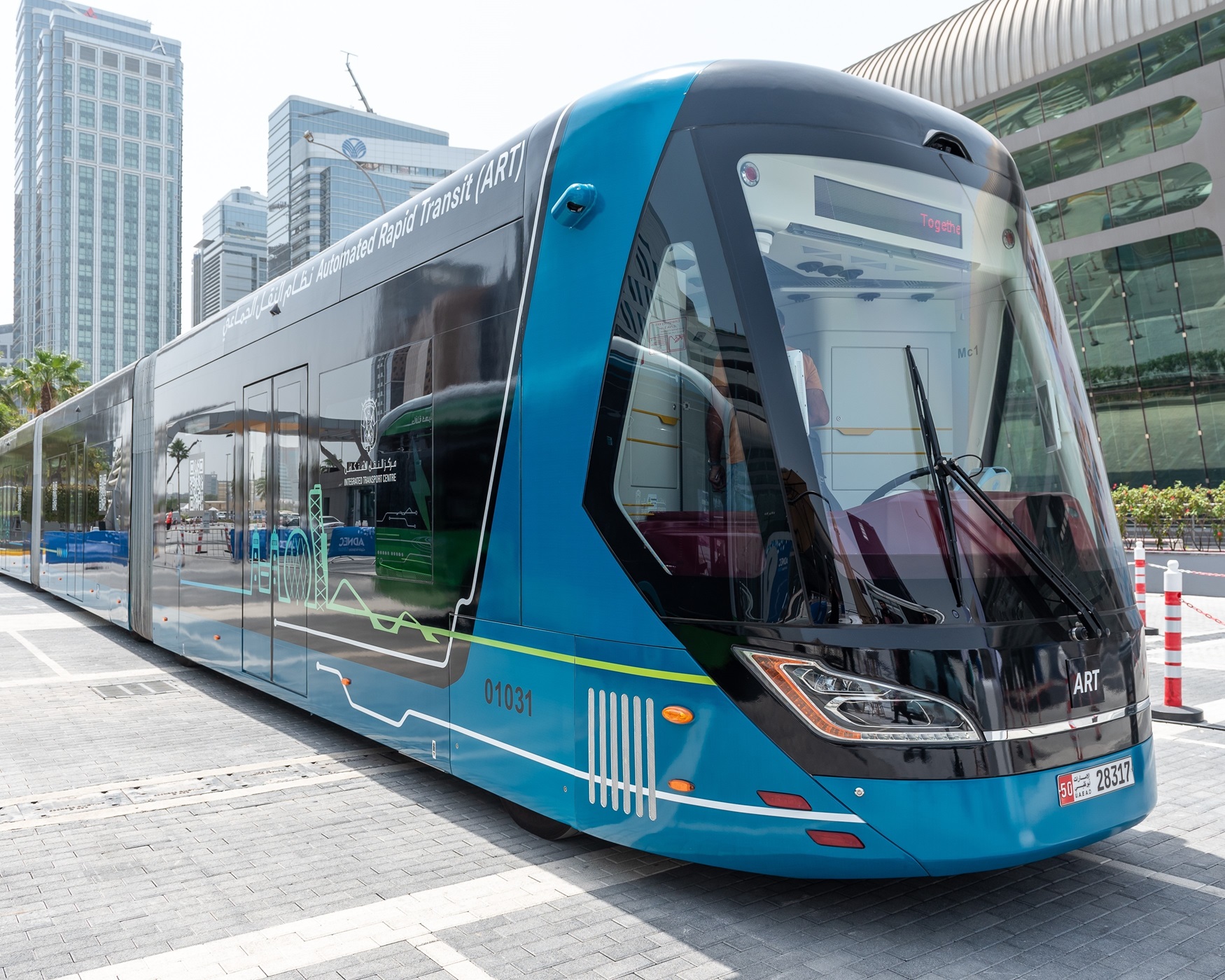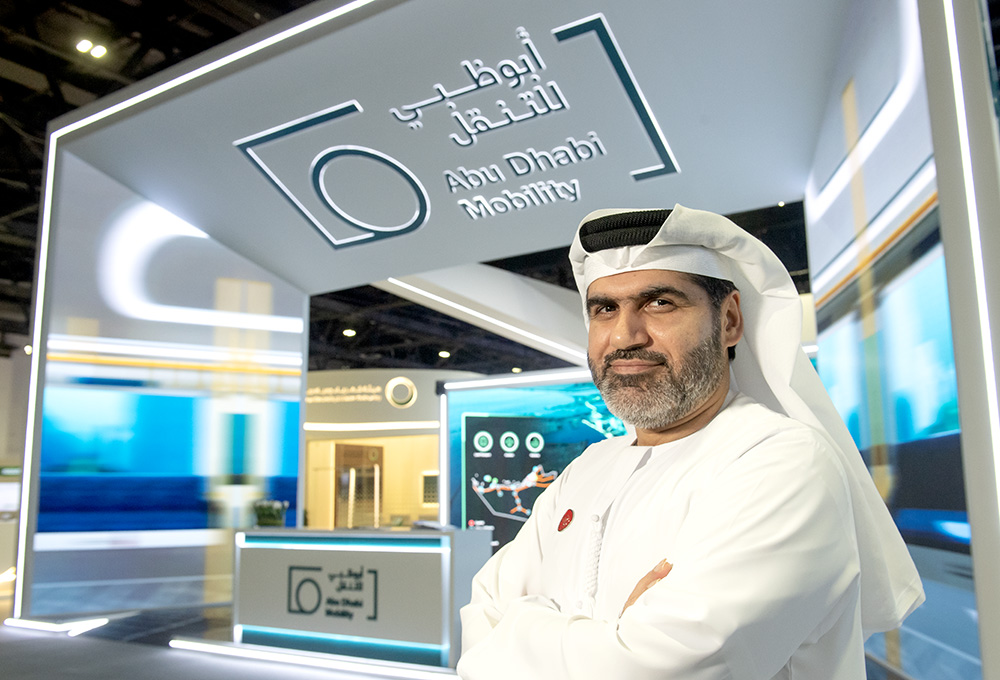
Abu Dhabi’s Department of Transport is planning to roll out its second phase ITS Strategy and Action Plan through to 2019 which will deploy a host of innovative multimodal ITS solutions.
The United Arab Emirates (UAE) is continuing to experience rapid growth in both its economy and population and none more so than its capital, Abu Dhabi. To cope with the current expansion, and in anticipation of future growth, the Abu Dhabi Surface Transport Master Plan has been devised by its Department of Transport and this calls for a transport system that follows the Emirate’s economic and social development.
More specifically it envisages the development and expansion of the road network, public transport modes and the implementation of intelligent transportation systems (ITS).
The UAE sits at the crossroads of Asia, Africa and Europe. Between 2005 and 2012, Abu Dhabi’s gross domestic product increased by more than 230% to 911 billion AED ($248 billion). Official estimates indicate that Abu Dhabi’s GDP will continue to grow at 4.8%.
The capital’s transportation system currently comprises of 2,500 km of multilane highways and arterials. The Emirate also offers a bus system that accommodates more than 150,000 passenger trips per day and a fleet of taxis in excess of 7,000. Although the Abu Dhabi Emirate continues to experience an increase in vehicle registrations on an annual basis, there has been a noticeable and continuous improvement in its traffic accident statistics as result of collaborative efforts from various government agencies.
Abu Dhabi’s Department of Transport (AD-DoT) was established in 2006 and in 2008 commissioned the Surface Transport Master Plan (STMP) which resulted in the 2010 release of an ITS program to fulfil the transport strategy outlined in Plan 2030. As part of the ITS Action Plan, between 2010 and 2014 the DoT completed various ITS projects such as the redevelopment and upgrade of the city’s traffic management centre, made improvements to its CCTV monitoring system and 40 portable variable message signs are being deployed. Some 2,000 traffic light heads have been fitted with low-energy LED lighting and more than 360 traffic counting and travel time systems have been installed.
Earlier this year AD-DoT completed the implementation of the first phase of its Integrated Transport Information and Navigation System (iTINS). This is a multimodal platform that collects and collates information from various transport modes in real-time and disseminates it to users via the internet and a smartphone application (Darb). The application was launched in April 2014 offering more than 30 services and updated versions, available for download to both Android and iOS devices.
In addition to the traffic updates, Darb provides real-time services that include booking a taxi, paying for parking fees, checking flight information or bus and ferry schedules as well as bus routes and stop locations. A second phase of iTINS is planned for development by the end of 2015 and will focus on the integration with satellite navigation systems to provide the travel information through in-car systems or stand-alone devices.
Other first phase projects that were listed in the 2010 strategy and are still on-going include the automatic fare collection system for bus passengers, the installation of 40 variable message signs at key strategic locations in Abu Dhabi city and suburbs and the implementation of fully adaptive (UTC/SCOOT) urban/interurban traffic management and control systems. A new traffic control centre is also being constructed in Al Ain city and the entire ITS communications network in Abu Dhabi city is being expanded and upgraded to accommodate the increasing number of systems as well as to ensure full integration and seamless exchange of data between these systems.
Eng. Salah Al Marzouqi – director of Integrated ITS Division stated that: “Next year the Abu Dhabi ITS Strategy and Action Plan is due for a major update for which AD-DoT is focusing on developing the 2016-2020 Multimodal ITS deployment plans. Another area of interest will include the latest advancements in the connected vehicles technologies - V2V and V2I - and how it could be introduced to the UAE. In doing so we want to avoid the shortcomings of the traditional transport planning of ITS which is serving single modes and is planned and operated separately.” This, he added: “will not deliver the efficiency and safety objectives stipulated in DoT Surface Master Plans and the Abu Dhabi Government’s 2030 Plan.”
In 2015 the AD-DoT envisages far-reaching changes designed to improve and extend all the transportation networks within the Emirate. To ensure the combined transportation systems can keep up with the rapid growth, these plans include a whole host of intelligent transport technology solutions including a multimodal journey planner, a parking guidance and information system and real-time travel information for bus passengers.
There are plans to install ITS infrastructure along 200km of highways and enhance the existing ITS infrastructure in Al Ain City and at the Yas Southern Tunnel.
As the success of the ITS eventually deployed will be dependent on the cooperation and support of all agencies in the Emirate, the DoT is conducting a widespread consultation with key stakeholders such as the police, emergency services, mass transit operators and the maritime and civil aviation sectors. And in order to have fully integrated systems from start, input will be sought from these and other key stakeholders including the various municipal administrations, the Urban Planning Council, the Abu Dhabi System and Information Centre (ADSIC) and the Environment Agency of Abu Dhabi (EAD). Input from these stakeholders proved very valuable when developing the 2010 ITS Strategy and Action plan in defining and prioritising user needs. These priorities were then fed into the development of functional, institutional and operational strategies adopted for implementing the ITS action plan. This methodology is to be repeated and extended in the planned update of the strategy document.
While the full details of the 2015 plan have yet to be finalised, approximately 600 million AED ($150 million) has been budgeted over the next five years to fund the projects it will spawn. Already there are 28 projects in varying stages of planning, design and implementation and the DoT is looking to utilise the expertise and experience of system and service providers. For highly complex and specialised projects such as advanced ITS, AD-DoT’s normal procurement approach is through invitation to pre-qualified companies only. The DoT has already pre-qualified a number of local, regional and international companies in categories of provision of ITS consultancy services, system integration and implementation as well as systems vendors (hardware and software).
AD-DoT said it is looking for imaginative solutions to the challenges it faces and to build on the efficiency and safety improvements already achieved with systems that have the capacity and capability for further expansion in the future.
We await the results with great interest.









